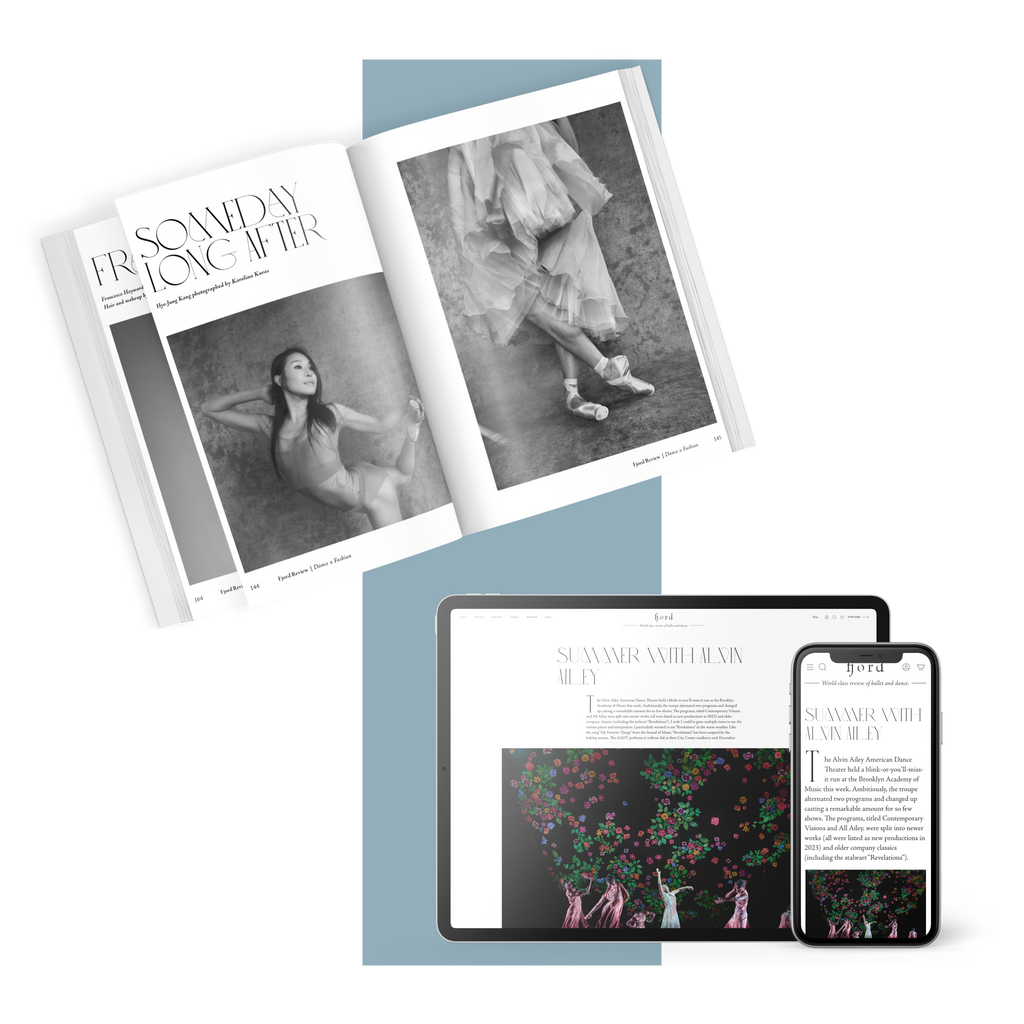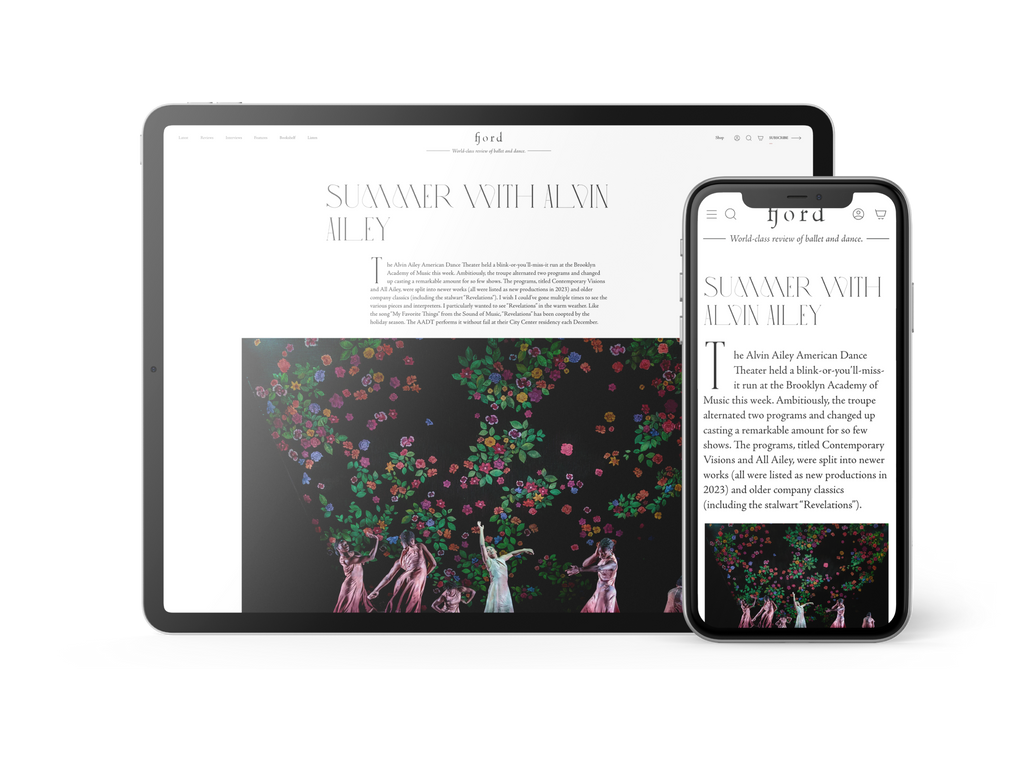The non-Balanchine act of the program comprised a new offering, “Pulcinella Variations,” by the company’s resident choreographer Justin Peck, as well as a familiar ballet, “Zakouski,” by NYCB’s former ballet master in chief Peter Martins.
This was the company’s first engagement in Washington D.C. since Martins resigned from his post after accusations of sexual misconduct. (He denied the charges, and the company announced that its independent investigation “did not corroborate the allegations of harassment or violence.”) Peck and three ballet masters—Craig Hall, Rebecca Krohn, and Jonathan Stafford, all former dancers with NYCB—comprise the company’s interim artistic leadership.
Overall, the evening left me with mixed feelings. With so much variety of everything—music, style, design, atmosphere and concept—the program felt somewhat overstuffed; and it was too long, running for nearly three hours. The dancing, however, was strong and, in some instances, brilliant.
If the entire program felt like an elaborate dinner, Martins’ 1992 duet, “Zakouski,” was the appetizer I wouldn’t mind skipping.
Set to a musical collage of four Russian composers (Rachmaninoff, Stravinsky, Prokofiev and Tchaikovsky), this piece looks as insubstantial as the food its title refers to. (Zakuski is the Russian word for hors d’oeuvres.) Stylistically, it is one of Martins’s odd explorations of the Russian theme, replete with folksy moves and sentimental glances.
Joaquín De Luz, dressed like a gypsy, was given plenty of time in the air; yet his soaring leaps and speedy turns did little to give the ballet its pulse. Indiana Woodward, clad in a bright red number, wasn’t able to breathe life into her part either. The dancers did their best and proved good sports, conquering with brio and spirit the multiple hurdles of their roles. But, for the most part, the choreography looked trivial and the unattractive costumes gave the whole thing a dated and tired look.
Justin Peck’s vibrantly colorful and somewhat zany, “Pulcinella Variations,” in comparison felt like a breath of fresh air. This is Peck’s rare foray into ‘tutu ballet territory’ and his “Variations” feature some of the most improbable tutus in the business. They are layered like fancy cakes and ruffled a lá Baroque. There is even a half-tutu—and the ballerina who wears it looks as if she is only partially dressed. In all, Tsumori Chisato’s commedia dell'arte-inspired costumes, with elements of Wassily Kandinsky, Salvador Dali and a speck of Russian avant-garde, is a show in its own right.
The ballet’s music is the suite from Igor Stravinsky’s Pulcinella, a composition, in which the modernist sensibilities of the Russian composer surrendered to pure classicism. It’s a fitting choice for a dance that looks thoroughly classical in style but is bracingly modern and fresh in realization.
“Variations” unspools as a chain of evanescent groups, duets and solos. The cast of nine filled the stage with movement that was at once exuberant, stylish and humorous. With this piece, Peck demonstrated his potent aptitude for classicism as well as his penchant for visually pleasing imagery and pulsating movement, even if the choreography lost its driving momentum at the end. The dancers clearly enjoyed the experience, dancing with eagerness and passion.
Sporting the most alluring costume of all, Tiler Peck, partnered by Joseph Gordon, looked terrific in the spritely Gavotta, breezing through the steps with blazing tempo and finesse. Sara Mearns and Jared Angle brought to the lovely Serenata loads of charm and a touch of romance, evoking Columbine and Harlequin. The lissome and lively Anthony Huxley, in the glittering costume adorned with green stripes and multiple ribbons, was in his very best form, showcasing his high-flying jumps and precise and elegant footwork.
The Balanchine acts of the program were golden. It was a particular thrill to see Tiler Peck in “Tschaikovsky Pas de Deux.” This celebrated duet, from 1960, is the kind of classical showpiece in which Peck is virtually unrivaled. Her breathtaking speed, as well as the sheer exuberance and technical perfection of her dancing, were a marvel to behold.
“Divertimento No. 15” was delivered with flair and style as well. The company just recently performed this piece as part of the all-Balanchine program during their winter season in New York.
Set to Mozart’s music of the same name, this ballet is a glittering jewel of classicism. In it, the female corps de ballet serves as an elaborate frame for the eight leads (five women and three men) and creates a magic of its own, especially in the luminous Minuet. The principals take turns in the Theme and Variations section of the ballet, demonstrating their technical prowess in duets and solos. And there is a mesmerizing Andante, in which the three leading men partner five principal ballerinas in a sequence of dazzling pas de deux. It was a confident and buoyant performance from the entire cast, illuminated further by the radiant Ashley Bouder in the central ballerina role.
The epic “Symphony in Three Movements,” however, had a few bumps both in the principal and ensemble departments. The ballet’s iconic diagonals and complex permutations of the corps de ballet lacked in forcefulness, control and visual impact. The best moments came from Sterling Hyltin and Adrian Danchig-Waring, who visibly luxuriated in their exotic pas de deux, with its liquid gestures and witty and often cartoonish imagery—a brilliant touch by Balanchine, who never failed to infuse even his most serious and sophisticated works with a sense of humor.




comments